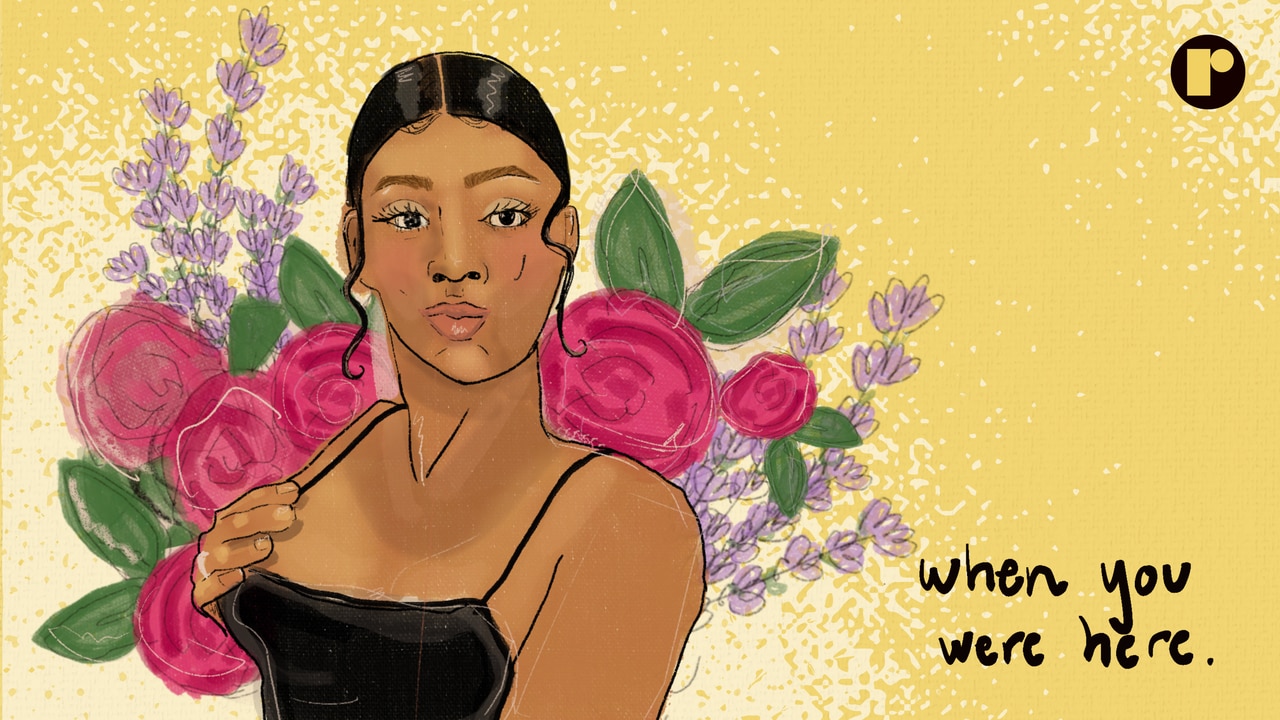When You Were Here: Maria Jose Rivera Rivera
This piece is part of When You Were Here, a series commemorating trans people whose lives were taken. Rather than centering their murders, our stories incorporate memories from people who loved them to illuminate the times when they were alive—when they were here.
When Cristian Sánchez first met Maria Jose Rivera Rivera five years ago, he recalls her getting in an argument with two older trans women in the detention center.
“She had this kind of attitude of ‘You can’t touch this’ or ‘I’m above it,’” recalled Sánchez, a Texas attorney for immigrant rights nonprofit RAICES, who identifies as gay and cisgender. At the time, he was amused by Rivera’s composure as the two older trans detainees were heated and red at the face from drinking.
In late 2018, Sánchez assisted LGBTQ asylum seekers from Mexico who called themselves La Comunidad, a group of people in a caravan driving up to the U.S. He also helped run a few shelters for them, one of which was in Tijuana, Mexico where he met Rivera. Originally from El Salvador, Rivera had been rejected by her birth family and fled to Mexico with La Comunidad and other LGBTQ asylum seekers who found strength in their togetherness.
Rivera, who was around 18 years old at the time, had already started transitioning. Despite being amongst other trans women like her, I imagined she faced some resistance from the older women who viewed her as a young person with a promising future.
“I remember sitting down with her and talking it out,” said Sánchez, who harped on the fact that “she was very calm,” in the heat of the women’s argument. Rivera, from what Sánchez had gathered, seemed to be cool and collected person regardless of her environment—including the bleak detention center.
When she was admitted to the States in early 2019, she was held in the South Texas ICE Processing Center in Pearsall—outside of San Antonio—in an isolated pod of trans women, separate from the general population. Though they were called “dorms,” the shelter was heavily reminiscent of prisons, bunk beds in row after row.
Sánchez tells me that many asylum seekers come with people who can sponsor them, except for trans people, wherein “a lot of times their family has rejected them, so they don’t have a cousin or an uncle that would take them in the States.”
Rivera spent over a year in the South Texas ICE Processing Center, also informally known as Pearsall Detention Center. By April of 2020, she was released along with three other trans women. Sánchez recalls her wearing “an adorable outfit,” and it’s true; in a group selfie Sánchez, Rivera stood out with her hair in space buns, wearing a smocked over-the-shoulder yellow top, paired with olive green flowy pants and her Barbie pink bag.
“It did not look like she had been in detention,” Sánchez said. “She was also the only person to come out of that center wearing sunglasses!”
When Sánchez showed me the selfie he took with Rivera, I was struck by her smile, and how although being released might bring up feelings of enthusiasm or even anxiety, she seemed calm.
“Her future was a bit uncertain, but she seemed to not be bothered by that,” he said, recalling the moment she was released.
She moved to Houston, Texas, to start the process of obtaining official asylum status. She struggled with the people she lived with, so she often moved housing abruptly and changed phone numbers, making it difficult for Sánchez to stay in touch. Nevertheless, he kept tabs on her journey as best as he could, persistent for her to see her case through.
“I hope she thought of me as somebody to rely on, and maybe more of a constant presence,” Sánchez said. “That I wouldn’t disappear on her or take advantage of her.”
